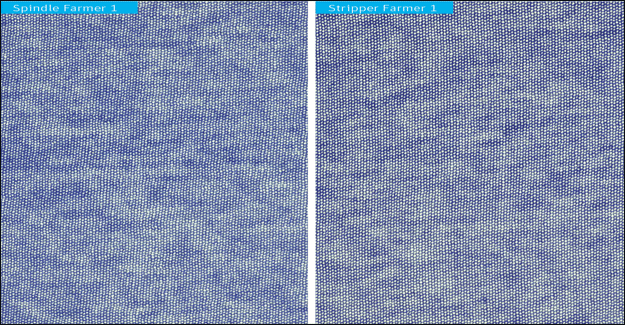Rieter, Cotton Institute Of South Africa Undertake Study Of Mechanical Cotton Harvesting Methods
Rieter, Cotton Institute Of South Africa Undertake Study Of Mechanical Cotton Harvesting Methods

In a joint cooperation between the Cotton Institute of South Africa and Rieter, the two commonly used methods of mechanical cotton harvesting were compared with each other. The comprehensive test and its results are available in a special print. Here are a few interesting extracts from the project.
Cotton is still the dominant staple fibre. In Africa, 1.4 million tons of cotton were produced in 2013. In South Africa, approximately 9 000 tons of cotton are harvested annually.
Two different methods of cotton harvesting were each examined with two different farmers. The comparison was carried out through to the knitted fabric, whereby carded ring and rotor yarns with various counts were spun. Not only the yarns and knitted fabrics were tested but also interim products, to be able to better interpret the effects on the yarn and the knits.
Today there are two common mechanical methods for harvesting cotton, namely the spindle method and the stripper method .
They differ in productivity and quality. The stripper method has many advantages like lower investment costs, lower fuel consumption and higher harvest yields. However,these advantages are partially offset by the increase in the proportion of immature fibres. Also known is that the cotton harvested with the stripper picker exhibits a higher seed coat content .
The fibre length, in particular short fibre ratio and mean fibre length, have a strong influence on the yarn unevenness. Across the process line, a mean staple which is 1 to 2 mm longer is seen with the spindle method compared to the stripper method. Thus, as far as evenness is concerned, a positive result in the yarn and in the knitted fabric is also to be expected. The other decisive factor here is how great is the influence is of the two yarn structures, namely ring and rotor.
The quality criteria of the ring yarn shows that the spindle method gives somewhat better yarn results than the stripper method. With rotor yarn, no evident differences between the two harvesting methods are detectable.
The knitted fabrics made of rotor yarn have a far better evenness than those made of ring yarn. This means that the influence of the end spinning system on the knitted fabric quality is far higher than the influence of the harvesting method. Nevertheless, the positive influence of the spindle method, at least with one farmer, is recognisable even in knitted fabric made of rotor yarn.
The special print includes the complete, comprehensive data and detailed explanations and background information. It can be ordered under rieter-link@rieter.com. Electronically, the special print can be downloaded with the given QR code.



 textileexcellence
textileexcellence 







